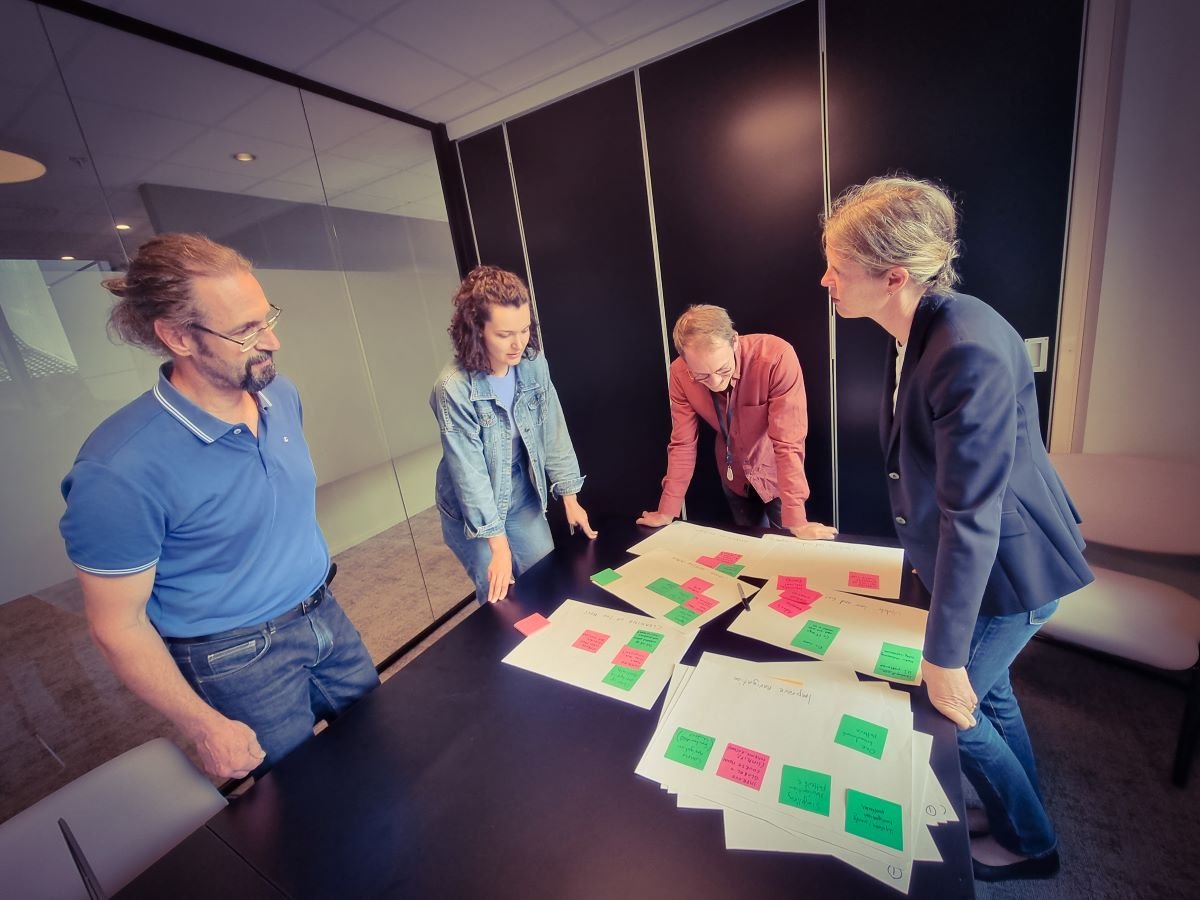A Fly on the Wall
So, let's talk about the secret behind a seemingly simple design. Right before the summer, I had the privilege of being a fly on the wall in an exciting workshop that marked the beginning of this project. As someone in product communications, I already had some insight into how these processes move within itslearning. However, it was truly inspiring to witness the collaboration between the talented team of product, UX, research, design and support.
The outcome of this dedicated work will be a brand new UX strategy, which the team is eagerly planning to present at the end of this year. To ensure that our platform is as intuitive and user-friendly as possible, our team has identified five key areas to focus on. But how exactly did they define these areas, and how do they turn them into actionable goals?

Dreamteam at work. From the left: Mattias Torstensson (Support Engineer), Aleksandra Shkurat (UX Team Lead), Eivind Flobak (User researcher) and Hanne Lorentzen (Product Owner).
In the initial stage of this process, our team takes a few steps to make sure they have the necessary background and knowledge to define a new strategy.
- Data Collection. Understanding how educators, administrators, students, and professors utilise our platform across various markets and segments.
- Identifying Pain Points. Listening to the feedback and experiences shared by our customers, highlighting the areas that pose challenges and need improvement.
- Brainstorming Solutions. Collaboratively generating ideas to address the challenges and pain points identified, envisioning innovative solutions.
- Evaluating Time and Resources. Assessing the estimated timeline for development and implementation, as well as the resources required to bring our proposed changes to life.
- Specification and Prioritisation. Determining which solutions will have the most significant impact and prioritising their implementation accordingly.
Conducting User Research
User research is the backbone of our UX process. And we're lucky to have customers that are willing to share and often serve as partners through some of our design processes. Through various methods such as interviews, surveys, observations, and usability tests, we directly engage with our users. By actively listening to their stories, we uncover invaluable information about their behaviors, preferences, and expectations.
During our research phase, we seek answers to key questions, such as:
- Who are our target users, and what unique characteristics do they possess?
- What are their goals and motivations?
- What challenges do they face in their learning journey?
- How do they currently interact with our platform and similar tools?
- What are their expectations and desires from an ideal learning platform?
By meticulously collecting and analysing this data, we gain a deeper understanding of our users, which informs our design decisions.
Prototyping and Testing
Once we've nailed down the specification and prioritisation phase, it's time to bring our ideas to life with some prototypes. Through a process of iterative design and testing, we'll ensure that these prototypes hit the mark by tackling the pain points and meeting the expectations of our users. This critical step allows us to assess the prototypes' intuitiveness and functionality, ultimately shaping the final design.
Feedback Loop
We are all ears for feedback from our users throughout our development process. We genuinely appreciate their insightful perspectives and ideas as they guide us in perfecting our designs and staying in sync with their ever-changing needs. This continuous feedback loop keeps our design decisions firmly anchored in putting the user first. Do you have ideas on how to improve itslearning? Please share them in our ideas portal, and contribute by voting and commenting on other ideas – the more votes the more influence! We consider all ideas when planning future work.
Conclusion
Understanding user needs and goals is the bread and butter of our UX process here at itslearning. By putting ourselves in their shoes, doing some serious research, and gathering all the juicy insights, we lay down a solid foundation for defining our new UX strategy. And let me tell you, the workshop was like a well-oiled machine, with our team of product gurus, UX wizards, design maestros, and support heroes in full swing.
As we continue on our UX journey, we'll be diving into more stages, building upon this initial understanding to create a comprehensive UX strategy that takes our platform's usability to the next level and makes the learning experience a real blast for all our users.
In the meantime, take a look at our roadmap to see what we're currently working on.
